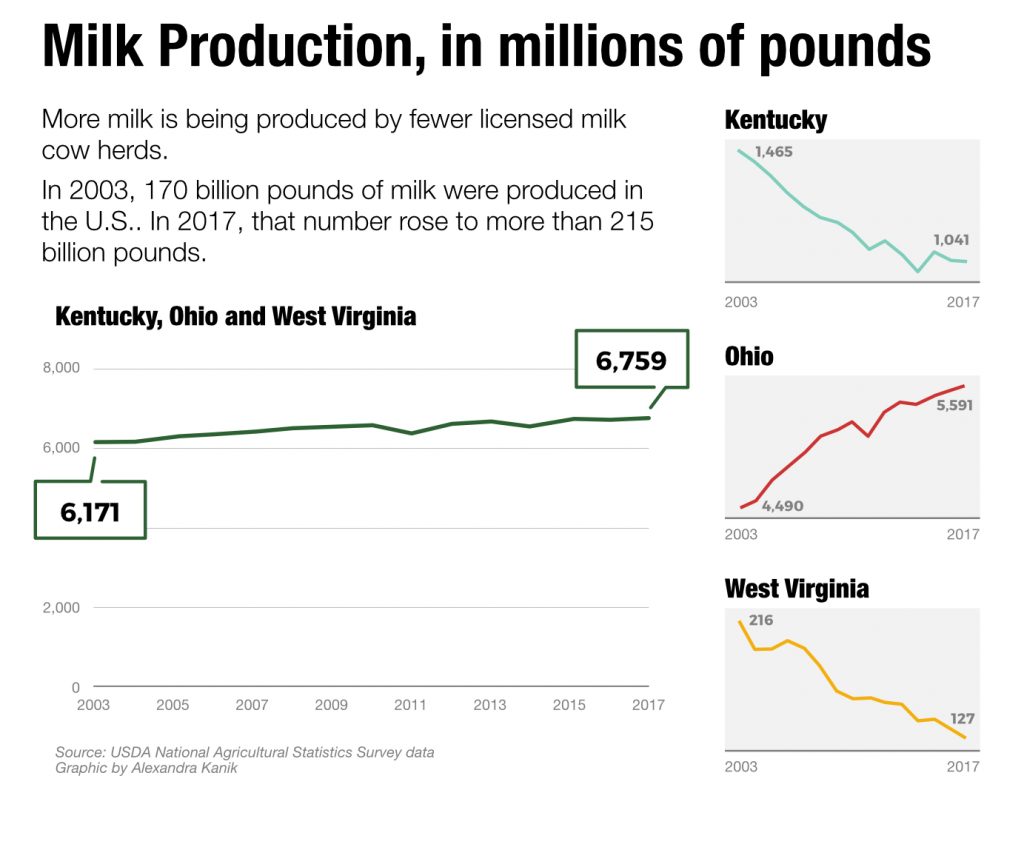News
Dairy Dilemma: Food Shelters Awash In Surplus Milk They Can’t Afford To Store
By: Glynis Board | Ohio Valley ReSource
Posted on:
Cyndi Kirkhart has some 26,000 square feet of warehouse space at the Facing Hunger Food Bank in Huntington, West Virginia, where she is executive director. That sounds like a lot of space. But very little of it is cooler space.
“This is the only cooler we have,” Kirkhart said, stepping into a walk-in cooler the size of a large closet filled with half-gallon containers of milk. “This is Kentucky milk, and this is West Virginia.”
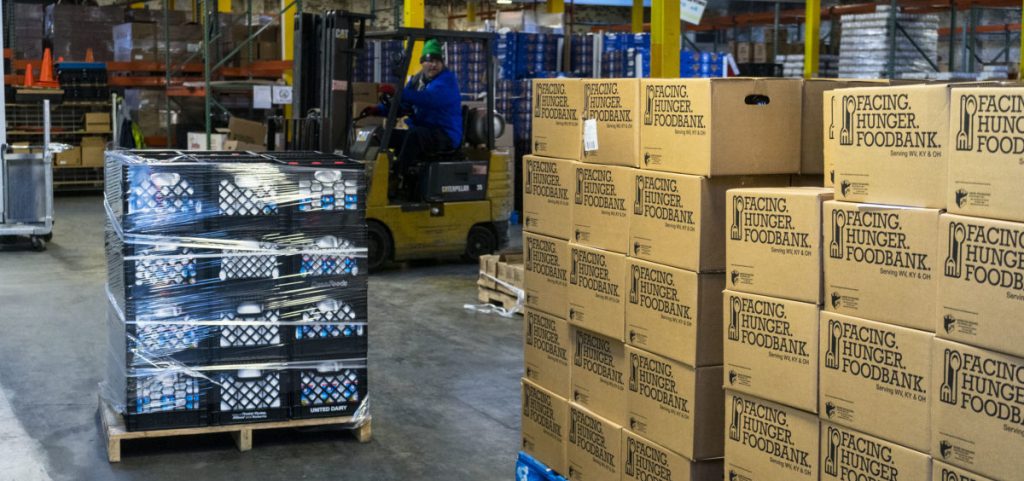
She said her operation has been receiving about 8 thousand of these containers, about a truck load, every couple of weeks since November. She expects to continue receiving the products from the federal government through March.
“What I can’t get in the cooler, I’m loading onto trucks,” she said, where she uses the diesel engines to run refrigeration units overnight.
Donations from the federal government are normal. But those products are usually nonperishable items with a long shelf life. With milk, they have about two weeks before it sours.
“We never have received what we refer to as ‘fluid milk,’ which is fresh milk,” she said.
Across the country, milk is flooding into food banks like this one as the federal government buys surplus milk from dairy farmers in order to help mitigate lost sales due to trade disputes and over-production.
Free milk for food banks sounds nice. But as economists say, there’s no such thing as a free lunch. And food banks are finding that this “free” milk is a mixed blessing. Storing and distributing perishable items drives up their administrative costs.
Milky Weigh
“Whose responsibility is it to get rid of this milk?”Joshua Lohnes asked.
Lohnes is a Ph.D. candidate at West Virginia University’s Food Justice Lab. He’s been researching the relationship between industrial food operations, the federal government, and emergency food providers like Facing Hunger.
The dairy industry is already producing a lot of surplus milk. The U.S. Department of Agriculture reports milk production has increased by 13 percent over the last decade, while overall milk consumption has only increased 5 percent in that time. Lohnes explains that recent trade disputes made the situation worse.
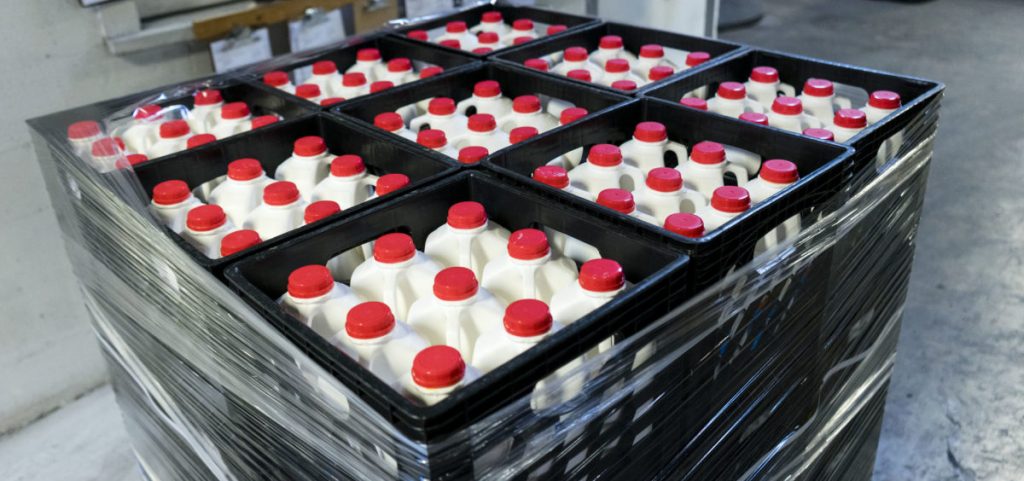
Since the federal purchases started in August the government has bought more than $50 million worth of milk and shipped it to food banks. But the food doesn’t come with any help to offset extra administrative costs.
“They haven’t been given any money to distribute that milk,” Lohnes said. “It costs the food banks $2 a mile to distribute this ‘free food’ across this vast rural landscape.”
Lohnes said food aid groups are talking with state legislators and the Department of Agriculture about ways to absorb the surplus milk.
“To try to figure out, you know, how to not have all of this surplus, pretty much tank their operation,” he said.
Food Mismatch
In a recent article in the journal Environment and Planning, Lohnes argues that government policies have effectively put food banks in a position to serve needs of industrial food operations. He says those policies ultimately do little to address core issues that lead to food insecurity.
“Food banks across the country are now recovering 4.5 billion pounds of food every year both from government sources and from corporate sources,” he said. That use of surplus or waste food is called “food recovery.” But while that “recovered” food has been flowing into food banks, measures of food insecurity have varied widely. “Sometimes they’re up, sometimes they’re down,” he said. “So food recovery doesn’t actually correlate at all to reducing hunger.”
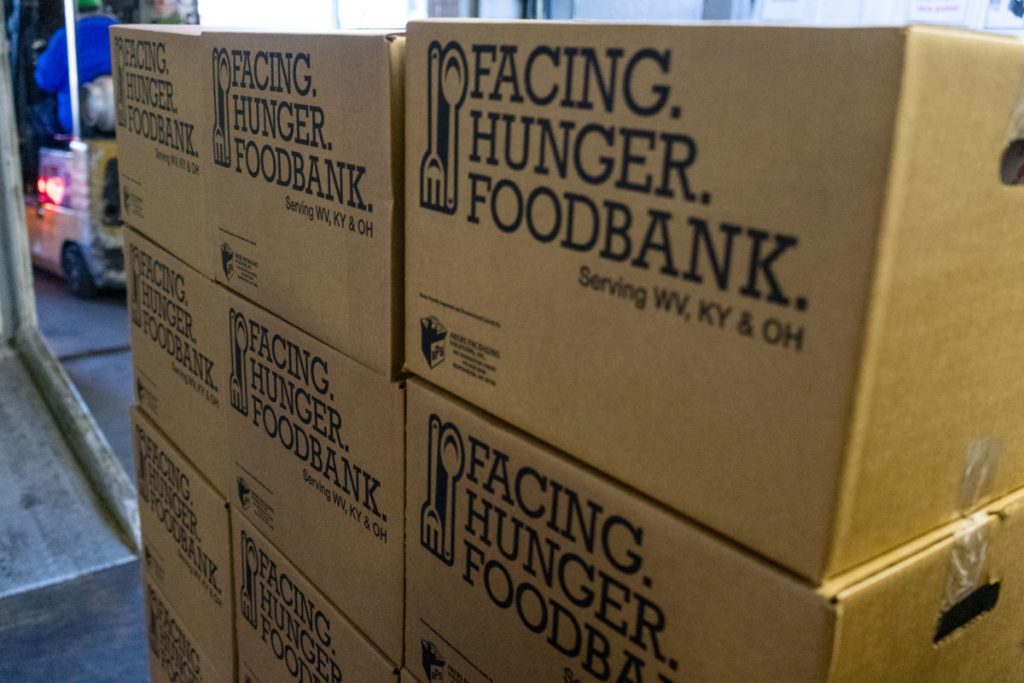
In the journal article Lohnes points out that food banks provide tax relief for food corporations and offer a “vent” for dealing with corporate food waste. But it’s not the corporations paying to operate the food banks. “They are primarily funded by community-based organizations who are themselves stretched thin by economic crises within their own locales,” he writes.
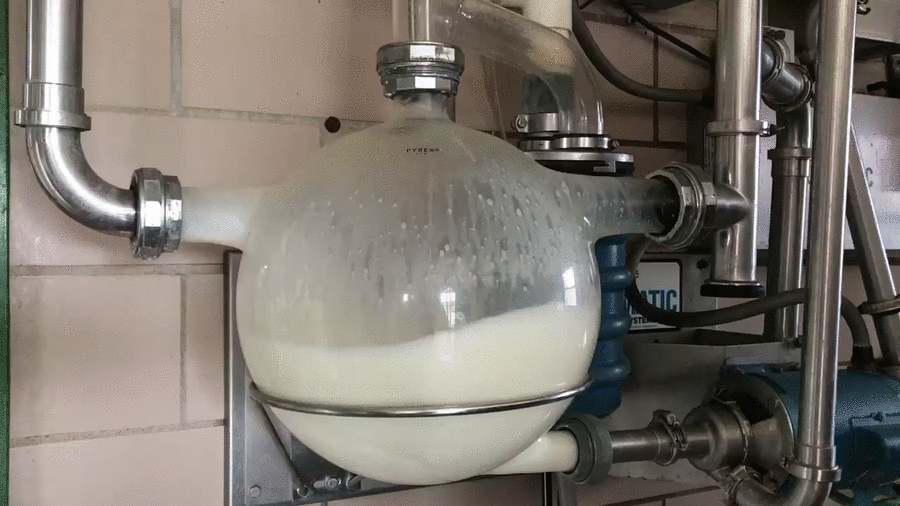
“Whatever it takes.”

“We have to do some juggling sometimes,” she said, but her team will “do whatever it takes.”
Food banks like hers do get some reimbursements from the federal government for administrative costs, but they don’t match the increases in overhead expenses created by perishable donations.
To complicate matters further, the federal government shutdown delayed those reimbursements. Despite those difficulties Kirkhart is confident her team and community will find a way to keep providing a much needed service.
“We’re gonna keep on keeping on,” she said. “I know that we have a lot of love throughout our service area, and people will help us through. Because that’s what Appalachians do.”


